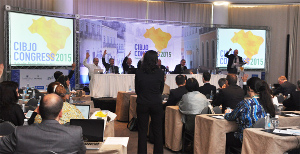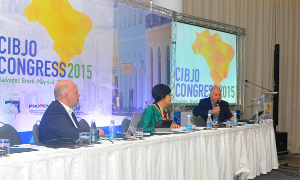Impact of technology for manufacturers and retailers outlined at CIBJO Sector B and C meeting
Embrace technology or expect to see your competitors take business away from you, was the message from Sector C Executive Vice President Simon Rainer at the Sector B and C gathering.
He spoke about the rapid changes taking place in technology and how advancements can help both jewellery manufacturers and retailers. It is also forcing changes in business models.
Rapid prototyping for new manufacturing processes are shaping how jewellery is being made – with CAD and lasers. The key challenge is to teach designers about these new technologies, he explained.
Advances in technology are bringing about greater complexity of jewellery design, including the use of 3D printing machines.
Speaking about the United Kingdom, where he is based, Mr. Rainer said that retailers are also embracing technology, and that is vital in the UK, where jewellery sales are expected to be flat and only in line with inflation in the coming years.
High Street retailers are under threat, he said, with a possible 22 percent loss of outlets by 2018 from 2012. That could see 1,500 stores closing in the next three years from the current level of 6,800 retailers.
He explained that the biggest challenge to bricks and mortars stores all around Europe, especially in the United Kingdom, France and Germany, continues to come from online sales. The rise in online sales in 2014 and again in 2015 is predicted to be 14 percent, he said.
“Once it would have been unthinkable to sell diamonds online. Consumers were worried about sending their financial details and about not seeing and feeling the jewelry before purchasing it,” he said.
He added that it was interesting to see how Blue Nile, a major U.S.-based jewellery retailer, is now changing to a bricks and mortar presence.
Mr. Rainer said sales initiated from mobiles and tablets are increasingly important, with 58 percent of consumers seeing mobile as way of buying this year.
He also said that online and offline are becoming increasingly linked, with Click & Collect becoming more popular. “Even Cartier has teamed with Selfridges to offer this service in the UK,” he commented.
It is projected that 76 percent of shoppers will be buying via Click & Collect by 2015 in the UK, and that this will grow in popularity by 20 percent annually, he said, adding that it was hoped that it would help stem the decline in offline sales.
Photo Caption: Members of the audience, during the Sector B & C session.






